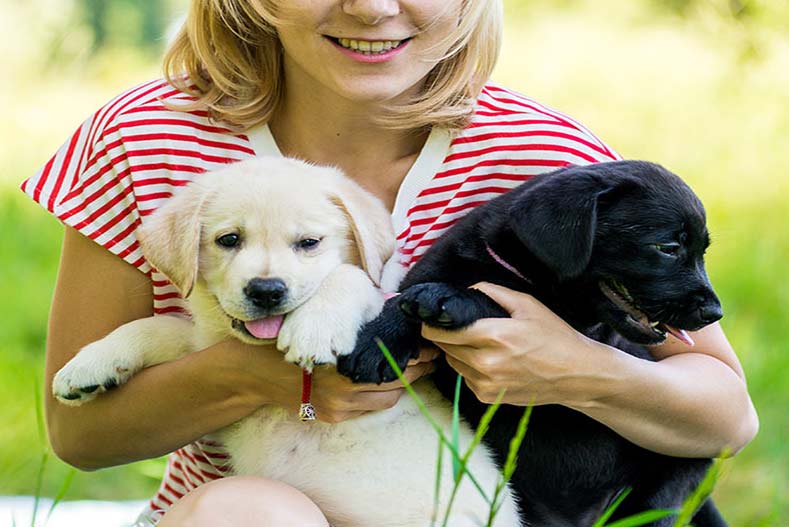
Eight-to-ten weeks is the age at which most breeders send puppies to their new homes, and it is important to let buyers know that they need to continue with socialization when they get their new puppy home.
The pups need to continue meeting new people. This is the final four weeks of the most important socialization period for seeing new people and having new experiences. Puppies are still programmed to be happy and curious about everything that is new. Tell your buyers to invite friends—adults and children—over as often as possible.
New owners shouldn’t be afraid to take their puppies out into the world. Many people think that they cannot leave the home before 12 weeks, but using common sense about where they go will ensure adequate socialization. Avoid dog parks, pet supply stores, or other places frequented by unknown dogs. Visit home improvement stores, where puppies can meet lots of men. Weekdays are the best; this is when contractors are shopping. Rides in the car to places other than the vet are a good idea. Remind the buyer that riding in a crate is the safest way for a dog to travel.
Puppy socialization classes held in clean facilities that require all puppies to be vaccinated at the appropriate level can be helpful. Tell your puppy buyers that they do not have to do everything the other puppies in the class do; just what their puppy is comfortable doing. Simply being there and seeing other dogs and people is enough. Let the puppy get comfortable at his own pace and don’t feel bad if he doesn’t want to play with the others right away. Meeting the other puppies’ owners is just as important, if not more so, as meeting the puppies themselves.
There are many things that breeders can do to make puppies’ transition to their new homes easier for both pups and their new owners.
Though 8-week-old puppies are just babies, they are ready for some training. By now, they should be reliably making their way to the part of the pen where they relieve themselves, and you should be taking them outdoors—showering praise and treats on them when they do their business there. Use food lures to teach them basics such as sit and down.

Let them wear collars and leashes, under supervision, to give them a start on leash walking. Just hold the leash and follow the puppy around while giving nice treats for staying close. Just a few short sessions of this will go a long way toward making leash training easier and more fun.
Bite inhibition is important now. The playing and wrestling that puppies constantly engage in with each other is just what they need. They learn how hard is too hard when the play stops after a hard bite.
Tell your buyers how to continue with crate training, and that puppies need to go outside much more often than they thought. Every hour isn’t too often. At this point, the puppies should be sleeping separately. Feeding them in their crates will help to make crates a happy place to spend time.
In your puppy package, include information and tips on training, as well as a checklist of things that their puppy needs to be exposed to by 12 weeks of age. Click here for a list of items to get started, as well as information about AKC’s S.T.A.R. Puppy program.
You are the person who can provide breed-specific information, such as grooming and exercise recommendations that will help your buyers raise happy dogs. Let them know that you will always be available if they have questions. They will appreciate all your hard work and preparation when their puppy makes a smooth transition into their family.

